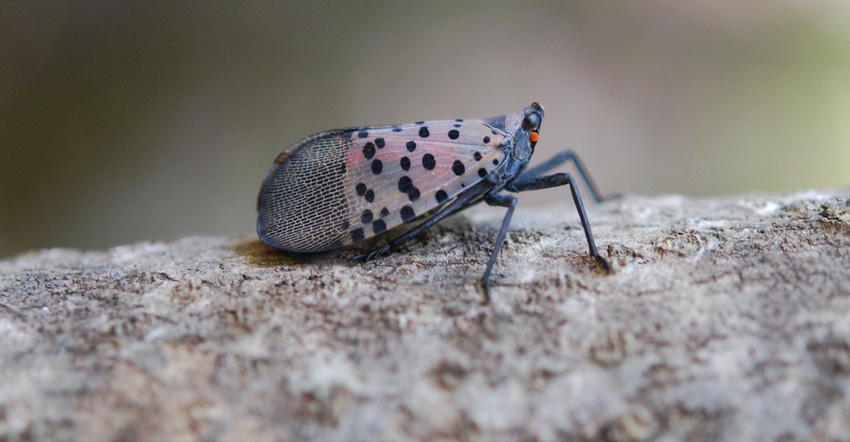February 17, 2021

The New York State Department of Agriculture and Markets; the Department of Environmental Conservation; and the Office of Parks, Recreation and Historic Preservation announced an innovative effort to combat the spread of spotted lanternfly in New York state.
A new online interface will allow volunteers to assist in surveying for spotted lanternfly and tracking associated data. The program encourages broader surveying for SLF and increased public awareness of this invasive pest, following confirmed findings in New York state last fall.
“This first-of-its-kind effort is a great next step in New York’s work to combat spotted lanternfly," says Richard Ball, commissioner of agriculture. "The public has been key to our efforts in combating the spread of this invasive species for years. By expanding this call to action, we can continue to share knowledge and encourage awareness of SLF across New York, while also increasing the amount of ground we are covering. I thank our volunteers for their help and encourage New Yorkers to get trained and start surveying."
The new initiative invites volunteers to sign up to survey a specific area, or grid, of land on iMapInvasives. This online, GIS-based data management system is used to assist citizen scientists and natural resource professionals to protect against the threat of invasive species. Volunteers also will enter data from their survey work into iMapInvasives.
The state will hold a series of training webinars to educate volunteers on how to identify SLF and tree of heaven, a plant that SLF commonly feeds on. Each training webinar will focus on a different life stage of SLF based on the time of year that stage would be most likely found during survey.
This winter, the training will focus on identifying SLF egg masses. The training also will cover how to use iMapInvasives, how to sign up for a grid and track data, and details about land access.
The first webinar will be held from 1 to 3 p.m. Feb. 23. More information about the program, including upcoming webinars, can be found at nyimapinvasives.org/slf.
First discovered in Pennsylvania in 2014, spotted lanternfly has since been found in New Jersey, Maryland, Delaware, West Virginia, Virginia and New York. It was first confirmed in New York state on Staten Island in August 2020.
Adult lanternflies and egg masses have since been found in Port Jervis, Sloatsburg, Orangeburg and Ithaca. The destructive insect feeds on more than 70 plant species, including tree of heaven, and plants and crops that are critical to New York’s agricultural economy, such as grapevines, hops, apple trees and maple trees.
While these insects can jump and fly short distances, they spread primarily through human activity. Spotted lanternfly can lay its eggs on any number of surfaces, such as vehicles, stone, rusty metal, outdoor furniture and firewood.
Adult spotted lanternflies can hitch rides in vehicles, on any outdoor item, or cling to clothing or hats, and be easily transported into and throughout New York.
In addition to volunteering for this new surveying effort, the public is encouraged to thoroughly inspect vehicles, luggage and gear, and all outdoor items for egg masses and adult spotted lanternflies before leaving areas with the pest, particularly in the counties of states in the quarantine area: Pennsylvania, New Jersey, Maryland, Delaware, West Virginia and Virginia. If adult spotted lanternflies are found, residents should remove them and scrape off all egg masses.
Residents also can help by allowing state surveyors access to properties where spotted lanternflies may be present. Surveyors will be uniformed and will always provide identification.
When to find them
Adult spotted lanternflies are active from July to December. They are about 1 inch long and a half-inch wide at rest, with eye-catching wings. Adults begin laying eggs in September, and egg masses can be found throughout the winter.
Signs of an infestation may include sap oozing or weeping from open wounds on tree trunks, which appear wet and give off fermented odors; 1-inch-long egg masses that are brownish-gray, waxy and mud-like when new; and old egg masses that are brown and scaly.
You might also see massive honeydew buildup under plants, sometimes with black sooty mold developing.
For more information about spotted lanternfly, visit agriculture.ny.gov/SLF.
Source: New York State Department of Agriculture & Markets, which is solely responsible for the information provided and is wholly owned by the source. Informa Business Media and all its subsidiaries are not responsible for any of the content contained in this information asset.
You May Also Like




